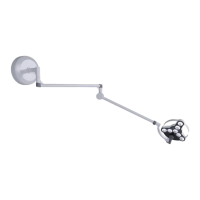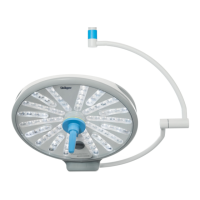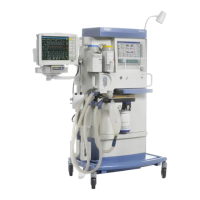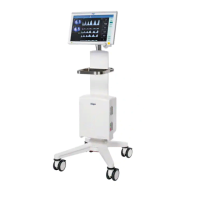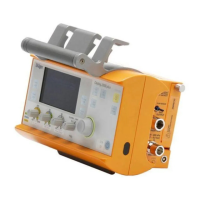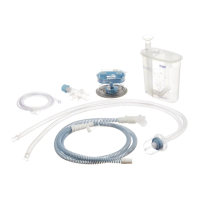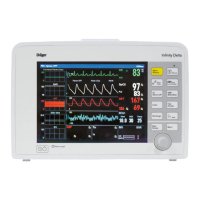o condensation may block filters in the patient circuit (especially a filter at the inspiratory
port)
Therefore, we recommend that you:
o Do not to use a fresh gas flow less than 20% of the minute volume of the patient or
less than 1 L/min. Dealing with patients producing increased amounts of CO
2
(e.g.
having high fever) significantly raise the fresh gas flow (e.g. to >50% of the minute
volume).
o Use hose systems with water traps in the inspiratory and expiratory limb; the longer
the hoses, the better
o Do not use a filter at the inspiratory port of the breathing system
o Always use a mechanical filter, if available with HME at the Y-piece. Be aware that the
filters may get clogged and have to be exchanged earlier; therefore, set close alarm
limits for minute volume low and Paw high
o Perform a system test every 24 hours if possible and empty the piston membrane
before performing the system test (Apollo, Fabius family)
o Set an alarm limit for FiO
2
low with adequate buffer because the difference between
the set fresh gas flow and the FiO
2
will increase and the system will react far slower to
modifications of the O
2
setting
o Set an alarm limit for inspiratory CO
2
high to an appropriate value
o If required, update the default settings, refer to chapter 2.12
o Check the following parts for humidity more regularly (at least every 4 hours)
water traps in patient hoses (drain, if condensation is detected)
water trap at the gas bench - Waterlock2 (drain, if more than 50% is filled with
condensate)
filter (exchange if increased condensation is detected)
remaining capacity of CO
2
absorber (exchange at least when 2/3 has changed
its color to purple to reduce condensation in the breathing system;
consumption of CO
2
absorber will increase significantly when lowering the
fresh gas flow)
o The device has to be operated by a constant supervision of an operator with extensive
knowledge of a rebreathing system
The measures above are very important for keeping the installed base of ventilators in
your institution functional for the patients that need long-term ventilation.
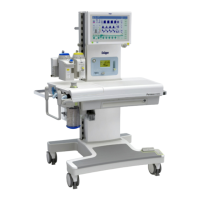
